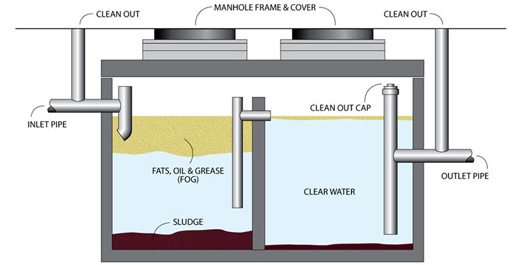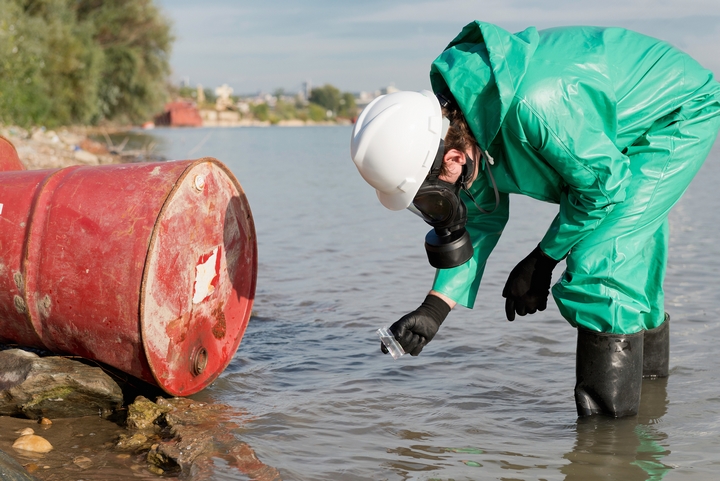Exactly How Liquid Waste Disposal Works: A Thorough Overview of Strategies and Technologies Utilized

Review of Liquid Waste Types
The complexity of liquid waste kinds requires a complete understanding of their qualities and implications for disposal. Fluid waste can extensively be categorized right into several types, including industrial, metropolitan, agricultural, and contaminated materials. Each group exhibits distinct residential properties, needing particular administration methods to alleviate ecological and wellness risks.
Industrial liquid waste originates from producing processes and often consists of a range of contaminants, such as hefty metals, solvents, and organic substances. Metropolitan liquid waste, largely comprising wastewater from homes and commercial establishments, has raw material, nutrients, and virus (industrial wastewater treatment). Agricultural liquid waste, including drainage from ranches, may consist of plant foods, chemicals, and pet waste, posing risks to water top quality and ecosystems
Harmful liquid waste is defined by its toxicity, reactivity, or possible to create damage. Comprehending these varied liquid waste types is essential for creating effective disposal techniques and guaranteeing conformity with environmental guidelines.
Physical Treatment Approaches

Screening is the initial action, where bigger fragments and debris are eliminated from the liquid waste using displays or grates. This procedure safeguards downstream tools from damages and makes sure smoother procedure. Complying with screening, sedimentation utilizes gravitational pressure to separate solids from liquids. In sedimentation tanks, larger particles resolve near the bottom, forming a sludge layer, while the made clear fluid can be further treated.
Filtration is one more crucial method that includes passing the fluid via permeable materials, such as sand or membranes, to capture smaller sized fragments. This step boosts the high quality of the liquid, making it suitable for subsequent treatment procedures.

Chemical Therapy Techniques
Chemical therapy techniques are important for properly taking care of fluid waste, particularly in resolving liquified and colloidal impurities that physical methods may not appropriately remove. These strategies use different chemical agents to reduce the effects of, speed up, or transform harmful materials into much less harmful types.
One usual approach is coagulation and flocculation, where chemicals such as alum or ferric chloride are contributed to advertise the aggregation of suspended particles. This procedure boosts sedimentation, permitting much easier removal of the look at this site resulting sludge. Additionally, oxidation procedures, employing agents like chlorine or ozone, are used to break down intricate organic substances and microorganisms, providing the waste more secure for discharge or additional therapy.
Neutralization is one more vital technique, which changes the pH of acidic or alkaline waste streams to neutral degrees, preventing prospective damage to downstream systems and the setting. Additionally, advanced oxidation processes (AOPs) make use of mixes of oxidants and ultraviolet light to break down consistent pollutants, achieving a higher level of treatment efficiency.
Organic Therapy Procedures
Organic treatment processes play an essential duty in the monitoring of liquid waste by making use of bacteria to disintegrate natural issue and lower impurity degrees. These procedures can be generally classified into aerobic and anaerobic therapies, each using specific microbial communities to attain effective waste destruction.
Cardio therapy entails using oxygen to facilitate the malfunction of organic materials by microorganisms. This procedure is commonly executed in turned on sludge systems, where aeration tanks supply a conducive setting for microbial growth, causing the oxidation of organic toxins. The resultant biomass can be divided from dealt with effluent with sedimentation.
On the other hand, anaerobic therapy takes place in the lack of oxygen, relying upon different germs to break down raw material. This approach is particularly useful for high-strength waste, as it creates biogas, a renewable resource source, while decreasing sludge manufacturing. Technologies such as anaerobic digesters are frequently used in metropolitan and industrial applications.
Both anaerobic and cardio biological treatments not just reduce the environmental influence of fluid waste however additionally promote source healing, making them vital components of lasting waste monitoring methods. Their adaptability, effectiveness, and effectiveness support their widespread implementation across various sectors.
Emerging Technologies in Disposal
Ingenious approaches to liquid garbage disposal are quickly evolving, driven by developments in innovation and a boosting focus on sustainability. Among these emerging technologies, membrane layer bioreactors more tips here (MBRs) have gotten traction for their ability to incorporate organic treatment with membrane purification, causing high-quality effluent that can be reused in different applications. MBRs make it possible for smaller sized impacts and more efficient operations contrasted to traditional systems.
One more promising growth is making use of anaerobic food digestion integrated with nutrient recovery modern technologies, which not just treats liquid waste yet additionally generates biogas and recovers beneficial nutrients like nitrogen and phosphorus. This double benefit improves resource performance and lowers environmental influence.
In addition, progressed oxidation procedures (AOPs) are being taken on for the destruction of complex organic toxins. These approaches use effective oxidants and drivers to break down contaminants at the molecular degree, using a very reliable remedy for tough waste streams.
Moreover, the assimilation of expert system and artificial intelligence in waste management systems is maximizing operational performance and predictive upkeep, leading to minimized costs and improved environmental conformity. These technologies mirror a considerable change towards even more efficient and sustainable fluid garbage disposal techniques.
Conclusion
To conclude, reliable liquid waste disposal necessitates a detailed understanding of different methods and innovations. The assimilation of physical, chemical, and organic treatment approaches makes sure the effective monitoring of diverse waste types. Furthermore, the appearance of cutting-edge innovations improves treatment efficiency and promotes sustainability in waste monitoring methods. By continually advancing these methodologies, it ends up being feasible to address the expanding obstacles connected with fluid waste, inevitably contributing to ecological protection and resource recuperation.
Fluid waste disposal is an essential element of ecological monitoring, calling for a comprehensive understanding of different techniques and innovations tailored to different waste kinds. Liquid waste can generally be categorized into numerous types, including commercial, metropolitan, agricultural, and dangerous waste. Agricultural liquid waste, consisting of runoff from farms, might consist of fertilizers, chemicals, and pet waste, presenting threats to water top quality and ecological communities.
Various physical therapy approaches play an important duty in managing fluid waste effectively - industrial wastewater treatment.In final thought, reliable liquid waste disposal requires an extensive understanding of various link methods and innovations